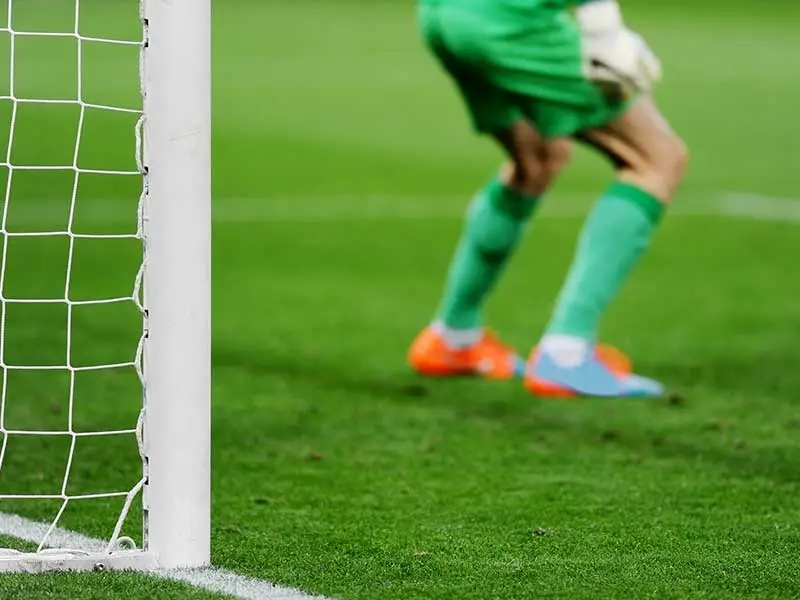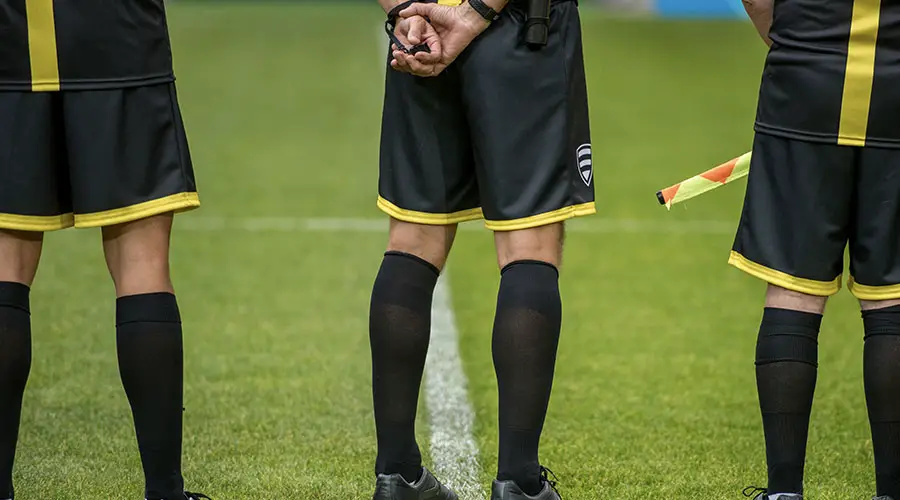What Happens If a Soccer Goalie Gets a Red Card?
Soccer fans know certain actions are crucial for the game. Scoring a goal is the most important thing, but other events can also change the game. One such is for a player to get a red card.
While soccer fans know what a red card is and why it is so important, many are unfamiliar with what happens when a goalie gets a red card. For a goalkeeper to get sent off is one of the most damaging things that happens to a team during a game.
If a goalkeeper earns a red card and therefore gets sent off, the coach of that team can bring on a substitute goalie to swap with an outfield player to stay in goal. Or, the coach can put an outfield player in goal, if he has no more substitutions left to use.
With the soccer rules demanding a designated goalie throughout the match, the team must make a change. But we will now take a deeper dive into the possible actions that can follow a goalie getting a red card.
What happens after a goalie gets a red card?
After a goalkeeper gets a red card, his team will continue with only 10 players. But because of the rules, someone must replace him. That is what the Laws of the Game, constituted by the International Football Association (IFAB) states – there must be a designated goalkeeper for the entire duration of a match.

The team can lose a goalkeeper during a match in two different outcomes:
- if a goalkeeper receives a red card and is therefore sent off, or
- if a goalkeeper has to leave the soccer field due to an injury.
When one of the two scenarios occurs, the team coach has to go with one of the two possible options:
1. Substitution of an outfield player
A coach can make a substitution when his goalie has been sent off and bring in another goalkeeper, provided he has substitutions left to use.
Official FIFA competitions allow making up to five substitutions during a game. With coaches usually having between seven and 12 players on the substitutes’ bench, they have the flexibility to choose their substitutions from those players.
But if a goalkeeper earned a red card and the coach wants to bring on the reserve goalkeeper from the bench, he must take off one of the outfield players already on the field. That famously happened right at the start of the 2006 UEFA Champions League final match.
Barcelona faced Arsenal in Paris. After just 18 minutes of play, Arsenal goalkeeper Jens Lehmann earned a straight red card. As he got sent off, Arsenal manager Arsene Wenger had to bring on the field another goalkeeper. His reserve goalie was Manuel Almunia, but he had to replace an outfield player.
Because Lehmann earned a red card, winger Robert Pires finished his Champions League final after just 18 minutes, even though he did no wrong. He just had to be sacrificed, to abide by the rules and have a goalie on the field.
Usually, when coaches have to make such decisions, they choose to replace an offensive-minded player. It’s easier to defend with fewer attackers on the field since the opposition will, either way, have a numerical advantage.
2. On-field tactical change
The second option for the coach is to make an on-field tactical change. That happens when a goalie gets a red card, but one of the players already on the field goes in goal to replace him.
That is the last resort for coaches. They sometimes have to go for it, if the circumstances are such. For example, this usually happens when a team has already used all of the substitutions at their disposal.
A coach has already made all the changes, and he cannot bring on the reserve goalkeeper anymore. Then one of the outfield players has to take the gloves, change his shirt and stay in goal.
An even less common situation can occur, too. A coach can substitute the starting goalkeeper if he gets injured. But then the reserve goalkeeper can get sent off, without the team having another reserve goalkeeper on the bench.
In such a scenario, the coach would also have to choose one outfield player to stand in goal. However, many clubs now put two reserve goalkeepers on the bench, and these things seldom happen. But when they do, they are a lot of fun for neutral fans.
Here is a collection of outfield players who had to become goalies for a short while, still managing to make some great saves during their time in goal:
When can a goalie be sent off?
A goalkeeper can get sent off for several different scenarios.
1. Making a professional foul
The first option for a goalie getting a red card is by making a professional foul. A professional foul is when a goalkeeper illegally fouls an opposition player and stops him from scoring or getting into a clear goal making opportunity. A goalkeeper can do that by pushing, pulling or holding the player in chance, without trying to get to the ball.
For such a foul play, he gets a red card because the resulting free-kick or penalty kick gives the attacking team a lower quality of chance to score than they had in the first place. The referee can then show the red card to the goalkeeper.
2. Handling the ball outside the penalty area
Another situation in which a goalie can get sent off is when he handles the ball outside of his penalty area. Law 12 of the IFAB’s Laws of the Game states that a goalkeeper can get sent off for handling the ball outside of his area when denying the opposing team a goal or a clear goal-scoring opportunity.
As the goalkeeper knows his handling of the ball outside of the penalty area is illegal and would still stop the opposition from scoring, the referee then punishes him with a red card. Thus, the goalkeeper would be sacrificing himself to save his team from conceding a goal.
How many games do players miss for receiving a red card?
Getting a red card in a soccer game means that the match is over for the player and that he will miss the next one at the very least. So, the length of the red card suspension can vary.

According to England’s Football Association, such length of the suspension varies depending on the foul that led to the sending off.
Second yellow card
If a player gets a simple second yellow card and gets sent off, he will only miss one match. However, if a player has a yellow card and then makes a terrible challenge, he can still receive a straight red card, instead of a second yellow. And that is important because of these varying suspension lengths.
Professional foul
A professional foul is when a goalie denies an obvious goal-scoring opportunity by handling the ball outside of his area or by committing an offense punishable by a free kick or a penalty kick. In such situations, usually, it still leads to a one-match ban.
Dissent
If a player uses offensive, insulting or abusive language towards a player or match official, he can get a two-match ban.
Violent conduct
If a player shows violent conduct by elbowing, kicking, stamping, striking, biting or hitting the opponent head to head, he can get a ban of three games. And yes, all of the above has been happening in soccer from time to time!
Serious foul play
If a player endangers the safety of an opponent with a tackle or a player uses excessive force or brutality, he also gets a three-game ban for such a red card offense.
Spitting
One of the worst bans a player can get if he spits at an opponent or a match official. Such mistakes can lead to up to a ban of six games.
The above are not the only things that can lead to a red card ban but are the most common.
The repercussions of losing a goalie
When a goalkeeper gets sent off, that means he will automatically miss at least the next game, depending on the reason for his red card. With the first choice goalie being the best at the club or a national team, his team will have to play one or more matches with their second choice keeper.
But another crucial aspect of a goalkeeper getting a red card is that the team will have to finish the game with 10 players. The coach will bring in a new goalkeeper or make one of the outfield players go in goal. Whatever the case, the team will have one player less than their opponents.
This numerical disadvantage leads to a team becoming more defensively oriented. The team with 10 men is no longer as focused on scoring a goal, but rather keeping their net safe. And a goalkeeper getting a red card is probably the sending off that can hurt a team the most – it leaves them without their best guardian of the goal and makes them sacrifice one outfield player.
Conclusion
So, if a soccer goalie gets a red card, a team has to bring a new goalie on the field, either via substitution or by putting an outfield player in goal. The coach has to choose which of the two options is better. That depends on whether he has a reserve goalie on the bench or any substitutions left to make.
Either way, a goalkeeper getting sent off is never fun for a team, but it can be interesting if an outfield player has to put the gloves on and stay in goal!
